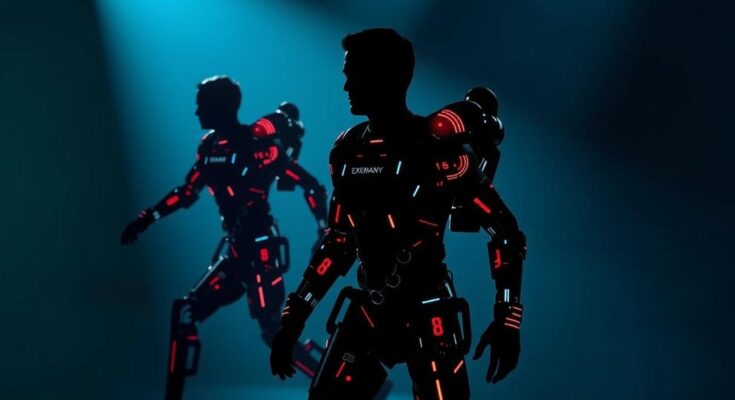Summary
In the heart of Berlin, amidst the bustling city life near the luxurious Waldorf Astoria and a stone’s throw from the renowned Ku’damm, lies the innovative hub of German Bionic. Nestled on the 18th floor, this office may have low ceilings, but it boasts an inspiring view that reflects the company’s ambitious mission to revolutionize the future of manual labor with their groundbreaking exoskeletons. As you step inside, the aroma of freshly brewed coffee mingles with the air, energizing the team that includes Armin Schmidt, the dynamic CEO, and Eric Eitel, head of marketing and communication. They are joined by Norma Hoeft, a visionary in the realm of the Internet of Things, where technology converges with human capability. In a corner, an eye-catching device— the Cray X, a fourth-generation exoskeleton—captures attention. This isn’t just any gadget; it resembles an advanced hiking backpack, designed with a vibrant orange backplate and leg straps, promising to augment human strength like never before. Exoskeletons, once a figment of science fiction, are now emerging as the next frontier in robotics, enhancing human performance across industries from construction to healthcare. Notably, other global players like Roam Robotics are creating specialized exoskeletons for skiers and Lockheed Martin for soldiers and firefighters, allowing these professionals to navigate demanding terrains with ease, while Sarcos focuses on full-body exoskeletons for bomb disposal. At German Bionic, the focus isn’t on machinery alone; it embodies the spirit of “Manfred,” the archetypical worker the exoskeleton is built for. This name resonates collectively with laborers, caregivers, and construction workers for whom reducing physical strain might just save a back or two. Since its inception in 2017, the German company has pioneered these human-machine systems, blending the enthusiasm of engineering with active-assistive technology that amplifies human motion through miniature motors, much like a power-boosting turbo for one’s muscles. Eitel recalls the early challenges of technology limitation, where achieving the necessary power in compact sizes was merely a dream. But with an eye on innovation and market timing, the launch was impeccable—three years earlier would have been premature, three years later would be too late. Schmidt, a seasoned entrepreneur, shares a humble take on his accomplished past, preferring to focus on the bright future represented by the breakthroughs made in exoskeleton technology. It all began five years ago, with a spark of inspiration from Schmidt’s cousin, Peter Heiligensetzer, who was busy designing an exoskeleton prototype aimed at safe human-machine collaboration for a research project. The positive response was immediate, with approximately 70 industry players eager to adopt this transformative technology. German Bionic soon found early adopters among professionals tackling heavy-duty tasks, including tire changers and logistics workers, highlighting the immense prowess these individuals possess. As Hoeft reminisces about those early prototypes, we can almost picture the chaotic workspaces filled with wires and tools where proud engineers tinkered tirelessly, overcoming obstacles with creativity. Fast forward to today, German Bionic stands at the forefront of exoskeleton innovation, where the Cray X is not just an evolution in design, but a statement of German engineering excellence. The lightweight device integrates cutting-edge carbon fiber technology—akin to race cars and spacecraft—to shed weight while enhancing strength and functionality. Behind its sleek exoskeleton lies a powerful mechanism—two high-performance servomotors that can offset an impressive 62 pounds of lifting force for eight-hour shifts, only pausing to recharge. Equipped with sensors that prioritize user productivity and health without infringing on personal data, German Bionic has made employee welfare its top priority. The anonymity embedded in user data, akin to a safety net woven into the fabric of the exoskeleton, ensures privacy as securely as a well-fitted harness. As workers engage with their Cray X exoskeleton, their identities remain cloaked in the mysteries of code, much like the anonymous users of a contact tracing app. Each interaction remains confidential, shielding them from prying eyes yet empowering them to rise above physical limitations. In a world where the boundaries of human capability are being continuously stretched, German Bionic is not just building exoskeletons; it is crafting a vision where human strength meets intelligent design, redefining the essence of labor, and ensuring that the workforce of tomorrow can thrive with resilience and grace.
Original Source: www.business-punk.com
